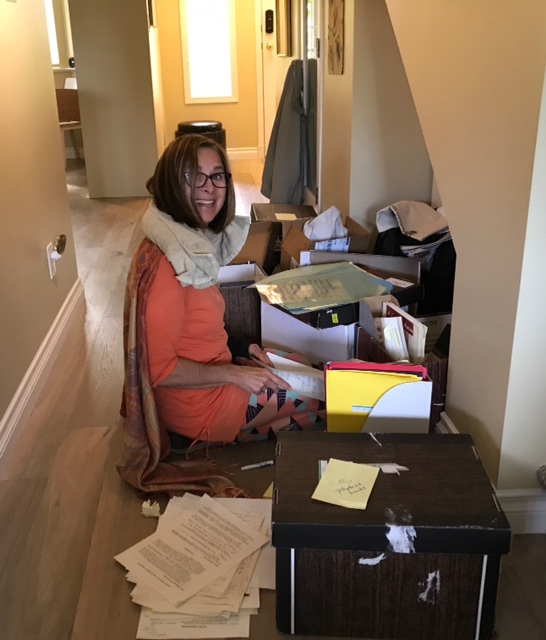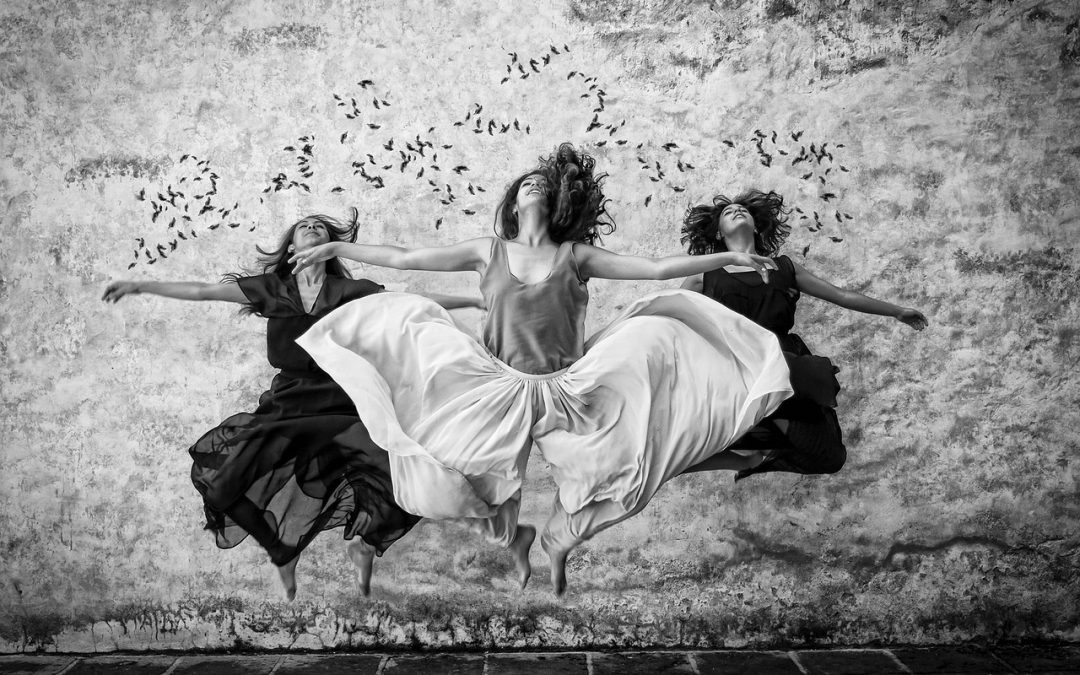
by pam | Mar 21, 2022 | Body-centered coaching, Health & Wellbeing, Self-Care
You may be feeling heavy-hearted and overwhelmed by all the conflict in the world, challenges you have faced during the pandemic; and to add insult to injury, the recent invasion of Ukraine. You may be feeling exhausted. Feeling like you want to return to bed a few hours after awakening. You may want to shake off all this sadness and heaviness and return to a lighter and more optimistic way of being.
I feel you. Recently I returned from a road trip to visit a dying friend. It was so sad to see how weak and frail she was having lost 50 pounds in the past 4 months. She texted and asked me to give her 15 to 20 minutes before arriving as it took that long for her to recover from unlocking her front door and returning to her living room couch.
It’s been 10 days since my return, and it took over a week until I started to feel more like myself. What have I found helpful to lift the heaviness from my heart and body, and support the return of my energy?
What did I do to help process the grief and sadness?
- I listened to my body. When I felt tired, I laid down for a short while.
- I created more space in my days. Rather than have my agenda “packed full” I removed and didn’t attend events that did not light me up.
- I went for a walk in nature every day. When we walk in nature it clears our energy, reduces our heart rate and blood pressure, and strengthens our immune system.
- I faithfully did yoga three times a week.
- Rather that push the sadness away I tried to feel it and let it flood through my body. I’ve learned that resisting sadness and grief takes a lot of energy and in the long run it still lingers in my body.
- I went for a massage with a woman who is also an energy worker. I felt much lighter the next morning after the massage.
- I openly shared my sadness with people close to me instead of acting strong and soldiering on (a typical behavior I have used in the past).
- I find writing, journaling, and doing something creative therapeutic; it takes my mind off the injustices in the world.
- I put on my favorite music and dance around the kitchen.
What strategies have you found helpful to process your grief and sadness? I welcome your comments below.

by PT-clc | Jun 7, 2018 | Change, Conscious Living, Letting Go, Life Transitions
I’m culling yet again! Less than two years ago my husband and I did a big downsize and moved from our dream home in the Okanagan Valley to a 2-bedroom rental apartment in Victoria. At that time I sold and gave away a lot of furniture, books, clothes …. When we moved from the rental apartment to our new townhome in late November, I culled yet again. Several months ago I committed to clearing out our Seacan (Big Steel Box) of remaining “bits and pieces” by the end of June this year. Now the pressure is on!
When I go through my boxes it feels like a life review. Recently I found a number of photos of my kids, friends, other members of my family and myself and had to make the tough decision about which ones to keep and which ones to throw away. I know that I could scan them all, but at this point in my life I don’t have the patience for that! Do your relate?
I’ve done a number of things throughout my life and have been going through courses I designed and taught; articles and documents I’ve written. On the one hand it’s felt good to realize what I’ve done, on the other I wonder how I used to accomplish what I did in a day. It’s a far cry from my current level of productivity!
I love books and have again gone through them and made decisions about which ones to give away. Some of them are in a “holding pattern” as I feel like I “should” read them again, but I question Is this a good reason to reread a book? Am I just afraid of letting go of more of my stuff?
So what am I learning from this experience? It’s teaching me to let go of things that no longer are of interest or bring me joy. It’s made me realize things that used to stir my passion, no longer do. My life has gradually switched from an almost total focus on activities involving my logical left-brain to a focus on my creative right brain and listening to my body; from a focus on achievement, to connection and creativity. It’s an interesting and yet at the same time, strange place to be. In the past I’ve always pretty well known the next step to take. Now I’m being asked to be patient, to create space and to notice what comes up. Have you ever been here? I also realize that when I let go, it opens the door for new people and possibilities to show up in my life. So I need to trust that I will be “shown the way”; all in good time.
Have you ever been in a “holding pattern” and wondered what your next step should be? What was that experience like for you? Have you culled your possessions recently or in the past? If so, what was that like for you?
I invite you to share your thoughts and experiences below, as that’s how we learn from each other. Until next time!

by PT-clc | Apr 10, 2018 | Change, Conscious Living, Dealing with Stress, Managing Change, Women in Business
Our world is characterized by rapid change and uncertainty. With new technologies, scientific advances, and rapid access to information, increasing expectations are being placed on us to do more things, faster and better. At times we feel stressed, overwhelmed and struggle with the inevitable fear, anxiety and doubt change brings up. I believe that we all have a choice to consciously embrace change rather than to unconsciously react to it.
Why do we fear change?
We are hard-wired to react to change; to protect ourselves and stay safe. Our primitive brains unconsciously “turn on” when we are in a situation that is different; we prefer sameness. Our amygdala (part of the brain) is constantly scanning our environment and when it senses a threat, it sends messages to our bodies to go into fight, flight or freeze. We all have seen friends or colleagues become angry or “edgy” when a change is imposed on them (e.g. new management, downsize, separation or divorce). We’ve also observed others or ourselves going into paralysis, and unable to make a decision. You may find when you are forced into changing something in your life, you typically want to run away from it or “hide your head in the sand”. We all have different ways we react to change.
There is strong evidence to show that we can choose how we respond to change. By consciously changing our beliefs and perceptions we have about change, we can physiologically change the structure of our brain (e.g. create new neural pathways). Dr. Norman Doidge’s amazing work on neuroplasticity described in The Brain that Changes Itself provides strong supportive evidence. Dr. Bruce Lipton in The Biology of Belief, shares powerful scientific evidence to show that all the cells in our body are affected by our thoughts.
How can we reduce our fear of change?
We can:
- Understand how and why we respond to change
- Become aware of our beliefs about change
- Try on some new beliefs around change
- Learn a proven model and tools to help us reduce resistance, and embrace and successfully navigate any change
- Commit to integrating new change strategies into our lives.
The more you understand change and the more self aware you are about how and why you respond to it, the more easily you can embrace and move through it.
So where can you start?
The 5-step Art of Change Framework I’ve developed based on more than 25 years of living, consulting and coaching on 5 continents, is a practical and accessible process. This framework is a proven model for embracing change whether it involves getting unstuck and moving forward when change is imposed on you, or whether you choose to initiate a change in your beliefs, attitudes and/or behaviors.
The Art of Change Framework is based on the belief that embracing change is a creative process that opens us up to new possibilities. Think of the times in your life when change was thrust upon you; e.g. you were laid off; or when a boyfriend/girlfriend broke up with you. At that time, you may have felt caught off guard, angry, fearful and uncertain about the future. On reflection, these changes opened you up to a new and better relationship or a position more aligned with your values and passions.
Embracing change enables you to let go of patterns that are no longer serving you and to move forward with confidence, clarity, improved health, happiness, fulfillment, and inner peace. For examples of this see: https://pamela-thompson.com/let-go-fly-free/.
The Art of Change Framework is a 5-step process for embracing change that uses the metaphor of life as a dance. The steps are:
- Shine the Light – Explore how you respond to change and why
- Choose Your Dance – Identify the transition you want to work on and where you are on your transition journey
- Feel the Rhythm and Learn the Steps – Commit to embracing change in your body rather than resisting it, and begin doing the work associated with the phase of the transition journey you are in
- Practice, Practice, Practice! – Do the work that includes letting go, identifying lessons learned, envisioning the work, relationship or life of your dreams, taking action, and viewing change as a creative process that opens you up to new possibilities
- Consciously Share Your Dance with the World – Observe the positive changes in yourself, how others respond to you, and the positive impact you have on your family, friends, communities and workplaces.
If you’re interested in “diving deeper” into the Art of Change Framework, I encourage you to join me and a group of like-minded women for a fun and interactive one-day workshop “Embrace the Art of Change: From Fear to Freedom” on April 27th in beautiful Victoria, BC. To learn more and to register:
https://www.eventbrite.com/e/embrace-the-art-of-change-from-fear-to-freedom-tickets-44230204733

by PT-clc | Mar 28, 2018 | Change, Coping with Change, Creative Living, Letting Go, Stress Management
“Freedom is a gift you give yourself when you release fear and spread your wings” – https://www.suziecheel.com/
I love this quote by Suzie Cheel!
What do you need to do to move toward freedom or in other words what do you need to let go of, in order to fly free? …
It could be letting go of deep-seated beliefs such as:
- In order to be loved and valued I need to perform and achieve
- If I give to myself, I am selfish.
- If I go really big with my business and am successful, I won’t have time for myself or to spend with people I care about.
It could be behaviors that are no longer serving you such as:
- At networking events or in social situations when meeting someone new, leading with what you know and what you’ve done so that people know you’re smart and accomplished, instead of leading with genuine interest in and questions about the person you’re interacting with.
- When speaking with someone at home or work, instead of focusing on them and being present, rather thinking of the next thing on your “to-do” list.
- Reacting negatively when changes happen or are imposed on you instead of thinking “what am I meant to learn from this experience”?
I recently completed a six-week “Soul Painting” course with Kimberly Leslie – https://www.kimberlyleslie.com/– an artist, healer and intuitive. I was interested in learning how to paint with acrylics, plus I was intrigued by the opportunity to be guided and supported in a small group to “create a painting in a sacred space that invite(d) my soul to share itself with me.”
The process was fun; I got to connect with my inner child and to finger paint. I was amazed at the energy in everyone’s painting, and was intrigued by the process and what I learned about myself through it. At the final class, the completion class, Kimberly guided us to ask our paintings what else they needed. At one point I put mine up against the wall, sat in front of it and asked what more was I meant to learn from it. Tears began to stream down my face and I asked what the emotion was about. I got the strong message that I didn’t need to perform and achieve in order to be loved and valued, instead by being myself I am valued and loved. It was a powerful moment.
There are a number of transformational techniques I’ve found useful for myself and my clients, that enable us to let go of beliefs and behaviors that are no longer serving us and move closer to flying free. In addition to the course I mentioned, they include:
- Spending regular time in nature
- Doing mindfulness walking meditations
- Journalling in the morning first thing or just before going to bed
- When faced with a challenging experience or change that is imposed on you, spending time “going inside” and asking “what am I meant to learn from this experience?”
- Participating in a group program or workshop where you are supported by an experienced facilitator and coach/mentor and learn how to turn your fears and doubts around change into living with more aliveness, creativity and joy such as:
https://www.eventbrite.com/e/embrace-the-art-of-change-from-fear-to-freedom-tickets-44230204733
If you’d like to learn more about how to “Let Go and Fly Free”, I’d love to have you join me and a small group of like-minded women in a beautiful natural environment for a one-day workshop Embrace the Art of Change: From Fear to Freedom on April 27th in Victoria. If you live up Island, or in such places as the Lower Mainland, the Okanagan or Washington state, if this speaks to you, I encourage you to join us and and spend several days in beautiful Victoria!

by PT-clc | Dec 19, 2017 | Celebrating, Change, Creative Living
December is a great month to reflect on your achievements from the current year and to set intentions for the coming year. According to William Bridges[1] (based on 30 years of research), in order to move successfully from one life transition to another, it is important to let go of any negative emotions associated with it, to celebrate the positive aspects and lessons learned from it… and to get clear on your vision for a new relationship, career, business … . The end of a year may be considered the ending of a transition and the start of a new year, a new beginning.
A process that I’ve found to be extremely useful for myself, and my clients is to answer the following questions and journal about them at the end of a year and before starting a new one.
Reflections:
What are the achievements I am most proud of in 2017?
What am I most grateful for this year?
What lessons have I learned regarding relationships, work experience, my own blind spots … over the past year?
Intentions:
What are my intentions for 2018 (in five areas)?
- Personal life – i.e. What my personal life looks and feels like. Note that it is important to write your intentions in the present tense as if you have already accomplished them. For example; “I am strongly connected to myself, my gifts, my fears, my strengths. I courageously uncover any and all fears, doubts and limiting beliefs that are holding me back from standing in my true power and fulfilling my larger vision and mission … .”
- Related to my Health – i.e. What my health looks and feels like. “I feel great! My body is toned, strong and flexible. I radiate health and vitality – physically, emotionally, socially and spiritually. I do yoga 3 to 4 times/week, meditate daily and spend regular time in nature hiking, kayaking, swimming, cycling …
- Financial – i,e. What my financial life looks and feels like. “ I average $_______ thousand a month in terms of income generation through Creative Life Coaching. I feel financially free and serene. I pay off my credit cards every month and my line of credit is paid off. …
- Spiritual – i.e. What my spiritual life looks and feels like. “I continue to meditate daily and deepen my ability to go within and connect with the Universal wisdom. I continue to strengthen and listen to my body’s wisdom. … “
- Intellectual – i.e. What my intellectual life looks and feels like. “I am flexible, flowing and open to new ideas. I connect with my creativity easily and effortlessly. … I blog regularly and articles come to me easily. I design and facilitate workshops and retreats that many women connect with and learn from.”
I encourage you to experiment with the process above. Feel free to change the titles of the 5 areas suggested to ones that resonate for you. Reviewing your intentions quarterly and noting how you’re doing in relation to them, helps keep them top of mind and provides encouragement to move forward. Using your intentions as a “touch stone” at the end of each year to review your achievements is helpful.
Celebrating your accomplishments feels so good and is important to provide you with the energy and commitment to move forward and fulfill your intentions.
Best of luck reflecting on 2017 and setting bold intentions for 2018. To your health, happiness, fulfillment and inner peace!
I invite you to try out the process and welcome your comments below. Feel free to share this post.
[1] Bridges, William. Transitions – Making Sense of Life’s Changes. Cambridge: De Capo Press, 2004.




